

Fast-food e período renascentista nas fotografias de Rebecca Rütten. Rebecca Rütten é artista, fotógrafa e cineasta de Berlim, Alemanha.

Com paixão por arte, viagens, pizza e música, ela resolveu trabalhar em projetos criativos e contar histórias através deles. Em um dos seus projetos, sua inspiração surgiu de pizzas, subway, donuts, tacos, cachorros-quentes e fast-foods. A criativa Rebecca desenvolveu uma série de fotografias e cenas do renascimento que questionam os novos hábitos alimentares. Retomando o estilo do pintor italiano Caravaggio, na série Peças Contemporâneas, ela retrata pessoas e alimentos em uma luz dramática.Os modelos? Rebecca convidou seus amigos a recriarem as poses antes que antes foram feitas para as obras dos artistas renascentistas.
Ela explica que no Renascimento pintores lidavam com classes média e baixa e sua intenção foi chamar atenção para a alimentação e representação destas classes sociais e o tipo de comida que cada uma consome. Author: Mylena Fontes. Conor Walton: Dinosaur. Conor Walton: Some thoughts on Still Life. I'm Still Standing (Yeah Yeah Yeah), oil on linen, 24 x 30 inches, 2010, collection of the artist.

Some thoughts on Still Life The origins of still life as an independent genre go back to the Italian Renaissance city states and the cities of the Low Countries, the founding centers of early capitalism. Its emergence reflected the increasing wealth that created a market for domestic paintings, the material opulence of the new culture, but also a new analytical realism; an interest in objects and objectivity, and in the visual process itself, that embodies the spirit of early modern science.
The depiction of objects naturally caters to the celebration of material values. Since the painting is itself a marketable object - a commodity - representing other commodities, it can mirror and comment upon the symbolic processes of commoditization and desire, in ways that ultimately reflect back upon the painting’s own intrinsic value. Examples of professional modern and historic Dutch Still Life and Vanitas. Beautiful objects were common in the northern Netherlands of the 16th and 17th centuries.
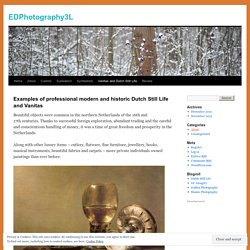
Examining Aesthetic History and Personal Identity – Anna Valdez at Hashimoto Contemporary. May 30, 2017 A philosophy graduate interested in theory, politics and art.
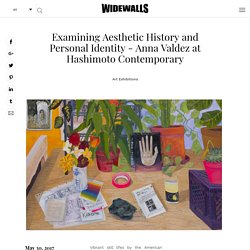
Alias of Jelena Martinović. Vibrant still lifes by the American artist Anna Valdez function as self-portraits. Working on a variety of narratives, she explores her own traditions and history through a visual format. Her latest body of work will soon be on view at Hashimoto Contemporary. Self-Reflections The paintings of Anna Valdez present cultural self-interpretations. Producing Cultural Meaning Perceiving an artist as a cultural producer, Anna Valdez attempts to conduct a specific investigation that cultivates not only personal identity, but also cultural meaning. Anna Valdez Art at Hashimoto Contemporary For Anna Valdez, people are products of their environment. Featured image: Anna Valdez – Ways of Seeing (detail).
Richard Kuiper – Dutch Still Life in Plastic. 500px Blog » The passionate photographer community. » How To Create A 17th Century-Inspired Vanitas Still Life Photo. Beauty will save, Viola, Beauty in everything. Dutch Golden Age still-life painter Adam Bernaert.

Carstian Luyckx. Opulent Still-Life with Silver and Gilt Metal Objects, Nautilus Shell, Porcelain, Food and Other Motifs on a Draped Table Carstian Luyckx, also known as the Monogrammist KL[1] (1623 – c. 1675), was a Flemish painter and draughtsman who specialized in still lifes in various subgenres including flower still lifes, fruit still lifes, fish still lifes, pronkstillevens (sumptuous still lifes), vanitas still lifes, hunting pieces and garland paintings.
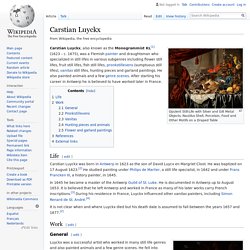
He also painted animals and a few genre scenes. After starting his career in Antwerp he is believed to have worked later in France. Life[edit] Carstian Luyckx was born in Antwerp in 1623 as the son of David Luycx en Margriet Cloot. In 1645 he became a master of the Antwerp Guild of St. It is not clear when and where Luyckx died but his death date is assumed to fall between the years 1657 and 1677.[2] Work[edit] General[edit] Nicolaes van Verendael. Metmuseum. Audrey Flack. Vanitas – symbols of death & decadence – bridgeman blog. Looking back at the ‘Memento Mori’ painting tradition, Vanitas is a macabre genre of symbolic still-life that prospered in the Netherlands in the early 17th century reminding the viewer of their mortality.
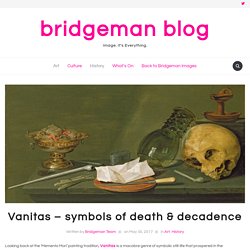
The word ‘vanitas’ is Latin for vanity, or ’emptiness’, and signifies the meaningless of earthly life. The purpose of Vanitas’ paintings was to caution the viewer to be careful about placing too much importance in the pleasures of this life as they could become an obstacle on the path to salvation. A Vanitas Still Life by Peeter Sion (fl.17th century) Photo © Christie’s Images Origins of the genre The wealthy middle class of the 17th century Dutch Republic invented capitalism as we know it today. Since the northern Netherlands had become Protestant, religious art was replaced by other genres of painting and precious objects and luxury items made their way into still-life paintings. Find out more See more Vanitas paintings in the Bridgeman archive available for licensing. Still Life Symbolism, why skulls, books, and candles in still life oil painting. What do we mean by still life symbolism?

Simply the use of objects within a still life painting that have a special meaning behind it’s use other then a simple compositional element. This creates a deeper meaning in a work besides being a pretty picture! The still life painting has allowed artists the ability to send these extra messages and have been used for many years, though lost (the meanings) to most art lovers today, there is a long history behind it. Vanitas Still Life. This striking vanitas still-life painting juxtaposes scholarly and artistic achievements with reminders of the fleeting nature of human life.

Daylight streaming into a dimly lit room from an open window at left highlights a marble tabletop adorned with a blue cloth. The cool light illuminates a large skull and femur on the table, softly modeling their smooth, curved shapes. Books and pamphlets of all sizes lie scattered beneath the bones. The books sit neatly shut, their leather covers glinting, while the pages of the pamphlets are curled and bent from frequent use. One of them is filled with small, illegible text. This small panel is one of the finest known works by the Dutch painter François van Daellen. Vanitas Still Life with Flowers and Skull · A Culture of Cultivation: Flower Still Lifes from the 17th Century to the Present · WUSTL Digital Gateway Image Collections & Exhibitions.
Adriaen van Utrecht, Vanitas Still Life with Flowers and Skull, 1642.
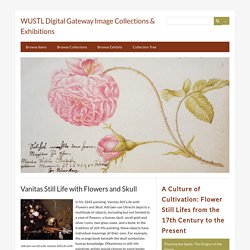
Oil on canvas, 67 x 86 cm. In his 1642 painting, Vanitas Still Life with Flowers and Skull, Adriaen van Utrecht depicts a multitude of objects, including but not limited to a vase of flowers, a human skull, small gold and silver coins, two glass vases, and a book. In the tradition of still-life painting, these objects have individual meanings all their own. For example, the orange book beneath the skull symbolizes human knowledge. Oftentimes in still-life paintings artists would choose to paint books with their pages open, exposing their content to the viewer as a window into the intellectual realm (note 1). The light radiating from the bouquet of flowers on the left side of the canvas serves as a point of entry into Utrecht’s cluttered, frenetic composition. Notes: note 1. Vanitas. Vanitas. Vanitas means 'futility' or 'worthlessness', that is, the pointlessness of earthly goods and pursuits, alluding to Ecclesiastes 1:2; 12:8 Vanitas vanitatum omnia vanitas, translated "Vanity of vanities, all is vanity" in the King James Bible.
Etymology[edit] The Latin noun vānĭtās (from the Latin adjective vanus 'empty') means 'emptiness', 'futility', or 'worthlessness', the traditional Christian view being that earthly goods and pursuits are transient and worthless.[2] It alludes to Ecclesiastes 1:2; 12:8, where vanitas translates the Hebrew word hevel, which also includes the concept of transitoriness.[3][4][5] Themes[edit] Vanitas themes were common in medieval funerary art, with most surviving examples in sculpture.